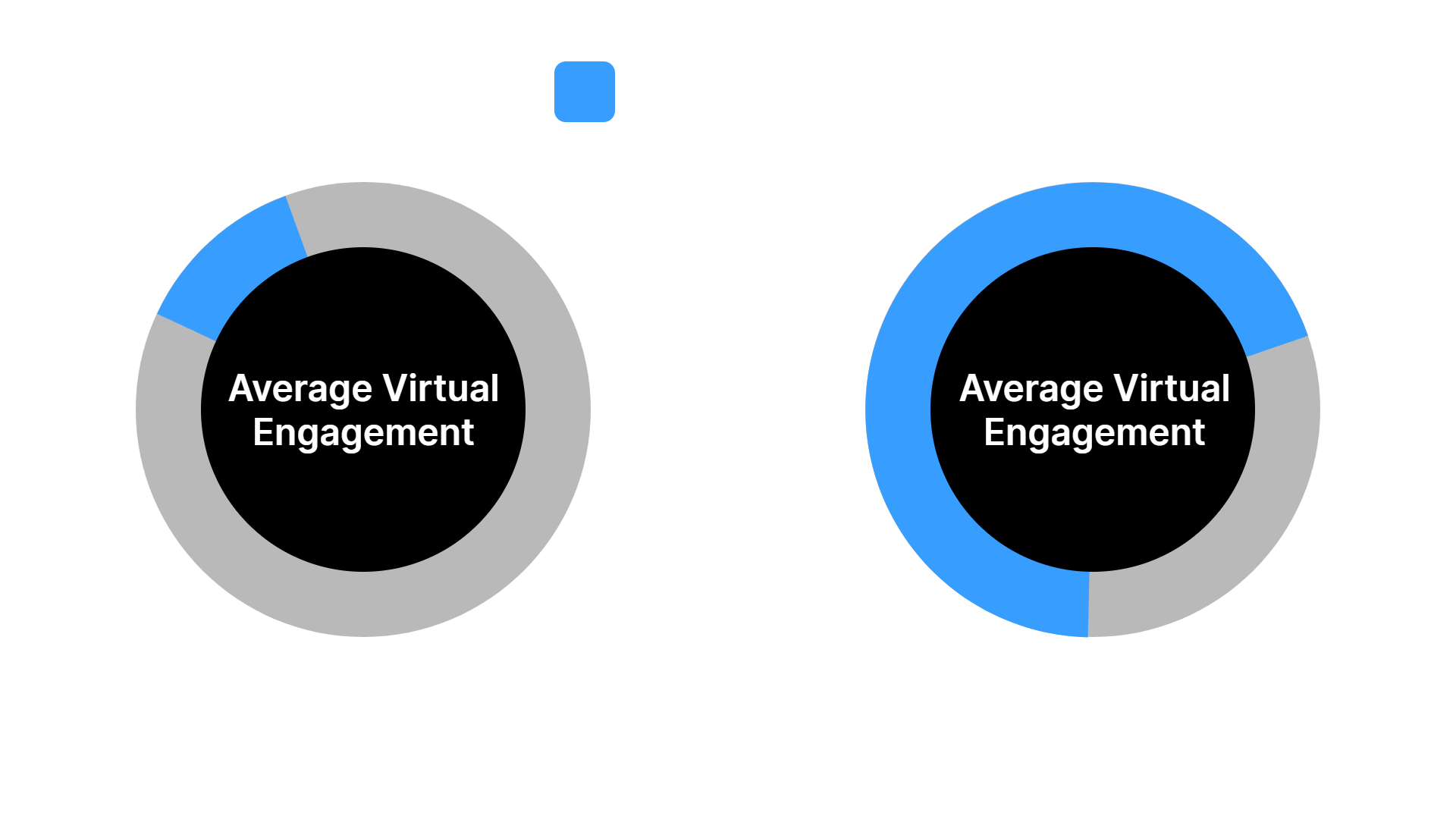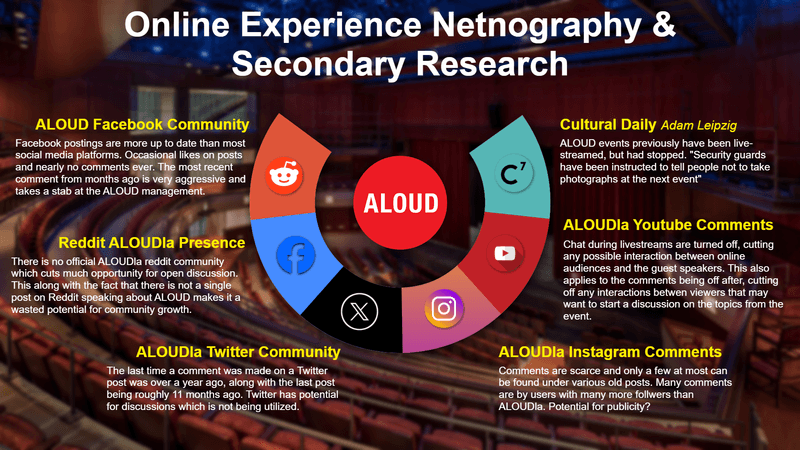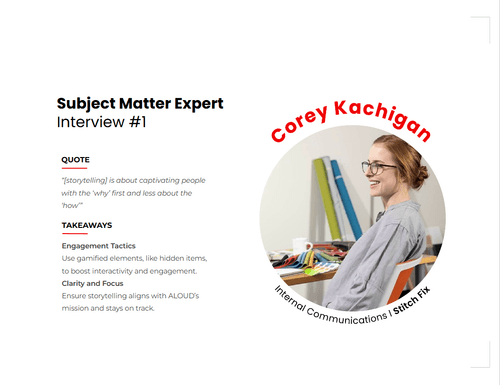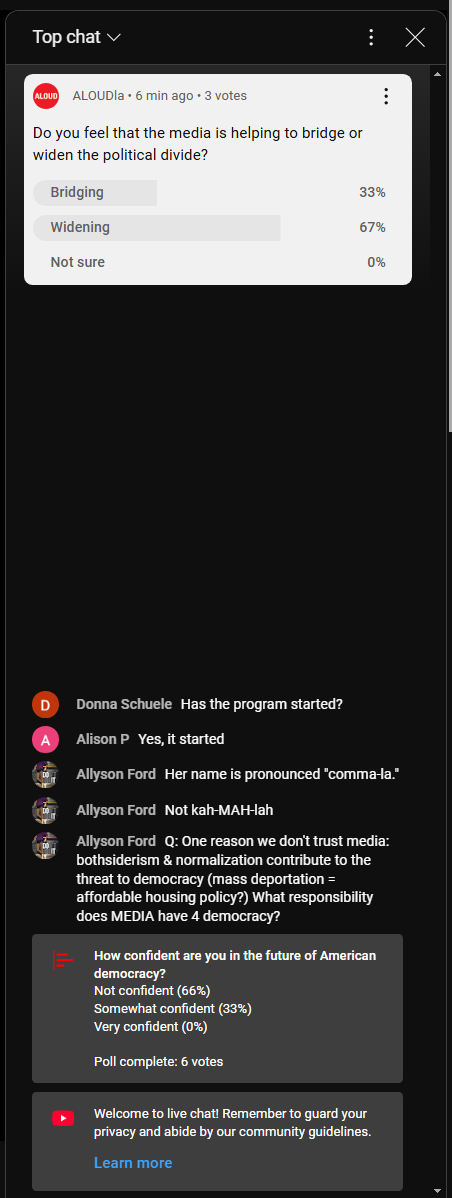Saving a Dying Library
We increased engagement for ALOUDla's online live streams and created a better experience for virtual users.

Duration
16 weeks
Client
Student Collaboration for IxD & Los Angeles Library Foundation
Role
Project Manager Researcher Video Editor Interviewer Designer
Skills Used
Target User Interviews, Journey Maps, Storyboards, User Flows, Low-Fidelity Prototype Testing, User Testing, High-Fidelity Prototype Testing
WHAT WE CREATED
We increased engagement for ALOUDla's online live streams and created a better experience for virtual users.
Problem
The Library Foundation of Los Angeles struggled to retain virtual viewers after COVID-19. We were tasked with bringing not only engagement back to the streams but also making them more enjoyable.
Insight
What we found was by prototyping an interactive live stream, we saw a significant increase in viewer engagement. This led us to our solution and plan to get and retain the attention of a virtual audience.
Solution
Our final solution involved prototyping and introducing engagement tools such as polls, Q&As, and storytelling to invoke emotional responses. We had great success testing these methods at a real event!
How might we foster deeper connections and participation among ALOUD's virtual audience?
Field & Desktop Research
After concluding field and desktop research, we found that YouTube is ALOUD's second-largest platform and is easily accessible without any login, making it ideal for hosting live streams. We also found that YouTube's built-in Q&A, polling, tags, and comments offer various ways to interact and engage with the audience. Finally, updating thumbnails and titles can boost visibility and reach a broader demographic, as requested by the ALOUD stakeholders.

User Interviews
We finalized our research by conducting interviews with professionals in the event-hosting world. Our top three takeaways from these interviews are:
1) Use gamified elements, like hidden items, to boost interactivity and engagement.
2) Virtual ticket buyers are more likely to watch when the event "premiers" live, even if pre-recorded.
3) Collaboration between on-site and online teams ensures seamless events.



Creating a User Persona
Now that we have a problem to solve and an understanding of who we are solving for, we created our user persona, "Madeline F." She is the typical demographic of an ALOUD attendee, so we had to take steps to ensure easy access to live streams. She is not very tech-savvy and has trouble navigating the digital world. She does not reside in Los Angeles, so designing for this persona is essential to gaining engagement in live streams.

Experimenting Before the Event
To enter the world of event hosting and to test a theory on engagement, I created a mock live stream with updated infographics that allowed stakeholders to visualize the potential for future live events.
The Final Event
With our preparations in place, we were ready to assist the final ALOUD event. We saw 60% engagement from viewers participating in our polls at the event we moderated. This engagement was seen through the poll questions we asked during the event's relevant sections.

My Reflection
This project was significant for many reasons, but this was my first real-world client collaboration, along with solving technical problems involving engagement strategies. Being able to project manage my team was a very insightful learning experience where I found my rhythm with time management and organization to keep the project on track. Balancing stakeholder feedback and limitations with what is best for ALOUD's success. It taught me the importance of iterative testing and adaptability which I will take into the workforce and use in my future.